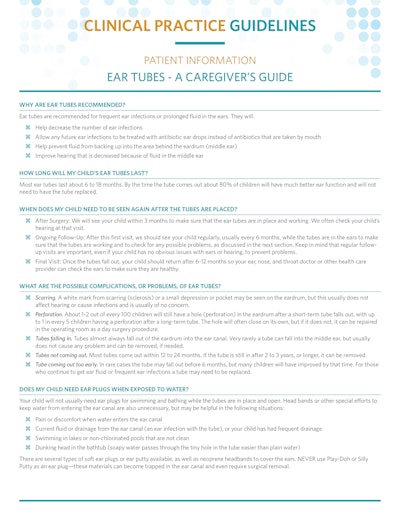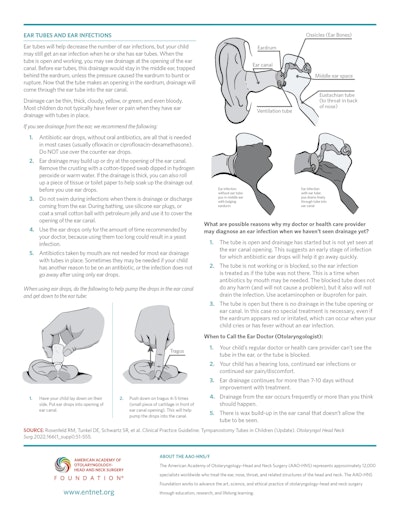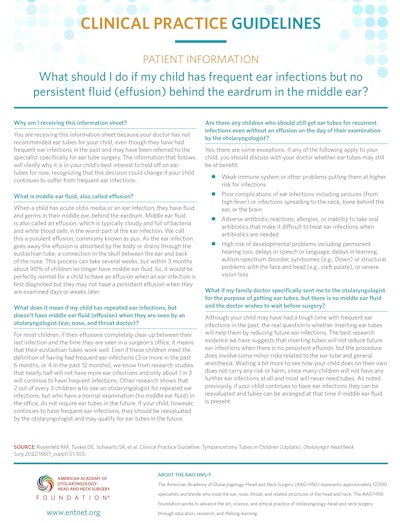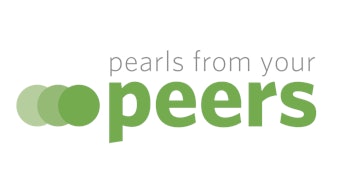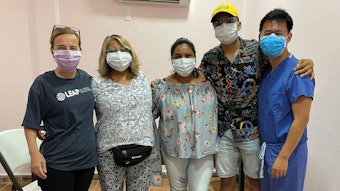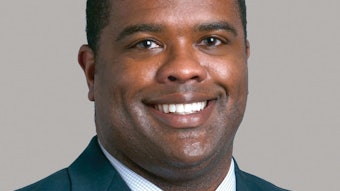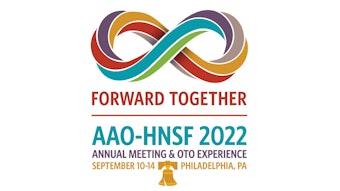UPDATE! Tympanostomy Tubes in Children
Insertion of tympanostomy tubes is the most common ambulatory surgery performed on children in the United States.
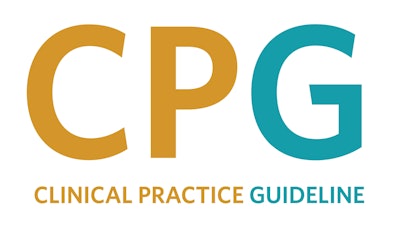
Insertion of tympanostomy tubes is the most common ambulatory surgery performed on children in the United States. The original guideline, published in 2013 and now with more than 500 citations, offered the first trustworthy recommendations on tympanostomy tube indications and subsequent research showed excellent adherence by clinicians to guideline recommendations for tube insertion and for watchful waiting to reduce unnecessary surgery. The AAO-HNSF guideline remains the only publication explicitly focused on tympanostomy tube indications and managing children who receive tubes.
“As the number one ambulatory surgery in children in the United States, insertion of tympanostomy (ear) tubes must be informed by trustworthy recommendations based on the best, and most current, research available, which is exactly what the new, fully updated CPG from AAO-HNSF accomplishes,” said Richard M. Rosenfeld, MD, MPH, MBA, Chair of the Guideline Update Group (GUG). David E. Tunkel, MD, served as Assistant Chair and Seth R. Schwartz, MD, MPH, served as Methodologist.
The purpose of this CPG update is to reassess and update recommendations in the prior guideline and to provide clinicians evidence-based recommendations on patient selection and surgical indications for managing tympanostomy tubes in children.
“The bottom line is that tympanostomy tubes — inserted in the right child, for the right reason, and managed the right way — can offer children and families extraordinary benefits, which are best achieved by following the superb multidisciplinary guidance in this new update,” said Dr. Rosenfeld.
In planning the content of the updated guideline, the GUG affirmed and included all the original key action statements (KASs) based on external review and GUG assessment of the original recommendations. The guideline update was supplemented with new research evidence and expanded profiles that addressed quality improvement and implementation issues. The group also discussed and prioritized the need for new recommendations based on gaps in the initial guideline or new evidence that would warrant and support KASs. The GUG further sought to bring greater coherence to the guideline recommendations by displaying relationships in a new flowchart to facilitate clinical decision making. Last, knowledge gaps were identified to guide future research.
“What is perhaps most exciting about the updated CPG is how it is part of a comprehensive suite of supporting materials that include an Executive Summary for clinicians, Plain Language Summary for patients and consumers, a flowchart that ties together all action statements in a cohesive management plan, an accompanying state-of-the-art review on in-office ear tubes and automated insertion devices, and a dedicated webpage with downloadable education materials for clinicians to use in shared decision-making with patients,” said Dr. Rosenfeld.
This update, which includes new evidence from 27 randomized controlled trials, 18 systematic reviews, and six CPGs, is intended for any clinician involved in managing children aged six months to 12 years with tympanostomy tubes or being considered for tympanostomy tubes in any care setting as an intervention for otitis media of any type. This applies to all KASs unless otherwise specified.
The target audience includes specialists, primary care clinicians, and allied health professionals, as represented by this multidisciplinary GUG, which comprised the disciplines of otolaryngology-head and neck surgery, otology, pediatrics, audiology, anesthesiology, family medicine, advanced practice nursing, speech-language pathology, and consumer advocacy.
This update will undergo a planned review five years after publication or sooner if new evidence or developments might alter recommendations or suggest a need for additional guidance.
To view Key Action Statements, Click Here
